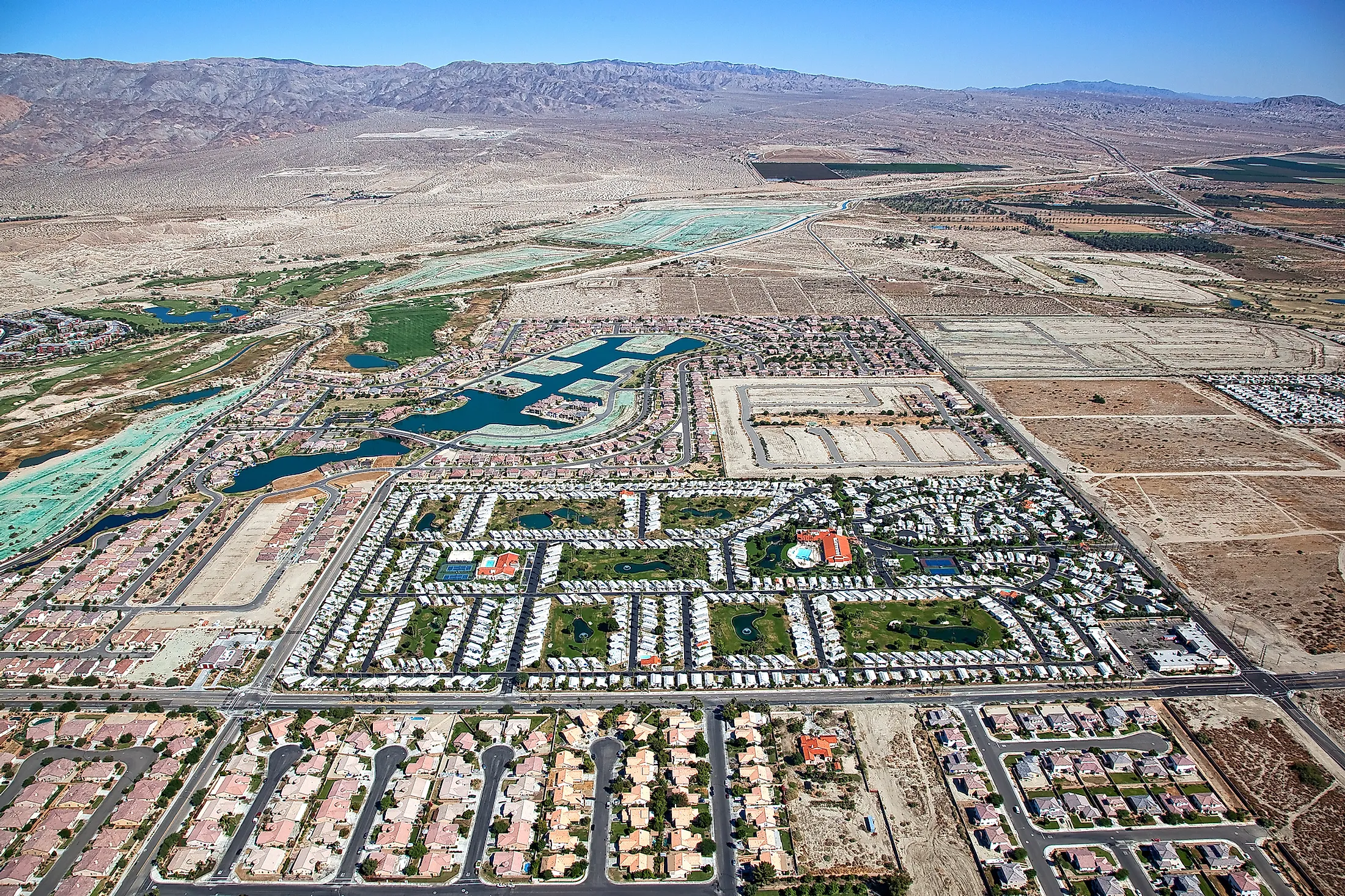
Coachella Valley
Coachella Valley is a part of the Colorado Desert and extends northwest 70 km from the Salton Sea through Riverside County to the San Gorgonio Pass, southern California. The valley is 25 km wide and is situated between the San Jacinto and Santa Rosa Mountains to its west and the Little San Bernardino Mountains to its east.
Coachella Valley had two names before 1900. It was called Cahuilla, after the Cahuilla Indians who inhabited the area, and Conchilla, which means "Little Shell" in Spanish, referred to the fossil shells that existed in the area. The current name probably came from a misspelling of the Conchilla on an official map.
Geography Of Coachella Valley

The Coachella Valley is located in the northernmost of the vast Salton Trough, also called the Cahuilla Basin, including the Salton Sea and the Imperial Valley. The trough came to be due to tectonic activity of both the East Pacific Rise that runs up through the Gulf of California to the Salton Sea and the San Andreas Fault, which follows the northeastern side of the valley.
The Santa Rosa Mountains border the region on the southwest, San Gorgonio Mountain to the north, the San Jacinto Mountains to the west, and the Little San Bernardino Mountains to the east. These mountains peak at around 3,400 m, with an average between 1,500 and 2,100 m. Elevations on the Coachella Valley floor differ, recording between 490m above sea level at the north end of the valley and 76m below sea level around Mecca.
The Climate Of Coachella Valley
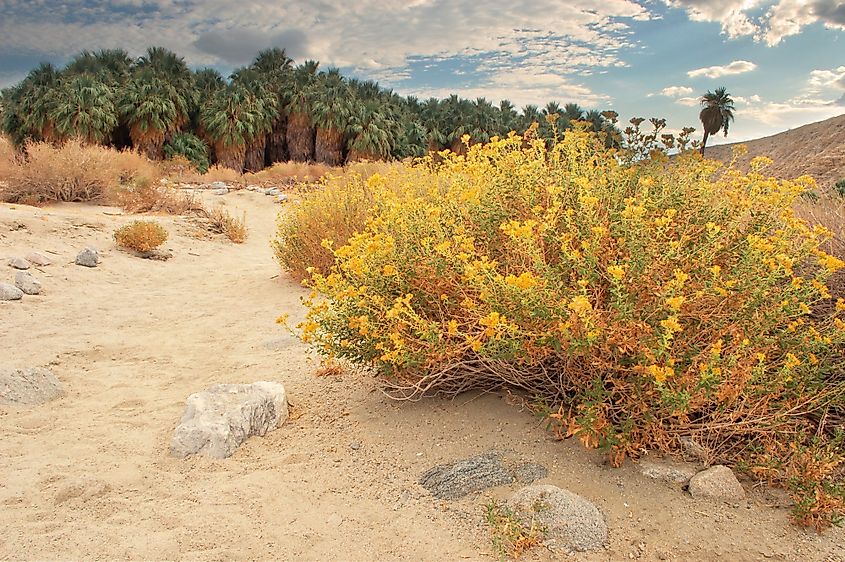
In the summer months, daytime temperatures in the valley range from 40 °C to 44 °C and nighttime lows from 24 °C to 30 °C. In winter, on the other hand, daytime temperatures range from 20 °C to 31 °C while nights range from 8 °C to 18 °C, making the valley a popular resort destination.
These lower daytime temperatures during the summer months and the higher nighttime temps in the winter months are because of the surrounding mountains, which create Thermal Belts in the immediate foothills of the valley. This warm year-round climate helps the agricultural sector in the region produce fruits such as mangoes, dates, and figs.
Coachella Valley is extremely arid as it is the northwestern extension of the Sonoran Desert to the southeast. Most precipitation in the region
falls during the winter season from passing mid-latitude frontal systems from the north and west. The precipitation is mainly rain, but snow falls on the surrounding mountains. Occasionally, the valley gets affected by the remnants of a Pacific tropical cyclone. In 1976, Tropical Storm Kathleen reached the valley with torrential rain catastrophic flooding to the Coachella Valley as it swept from the Pacific, traversing the region from south to north.
Ecology Of Coachella Valley
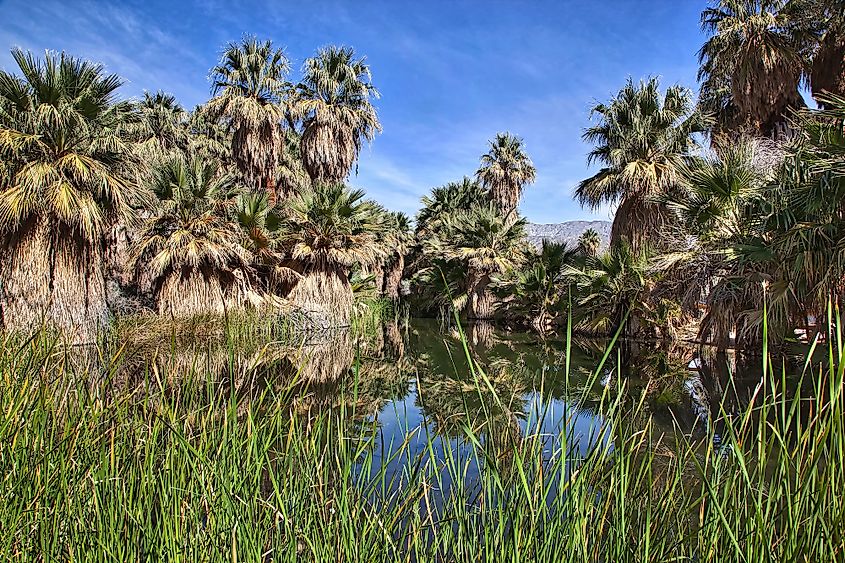
The desert environment where the Coachella Valley is located hosts a wide variety of flora and fauna. The endangered California Fan Palm, Washintonia filifera, Bighorn sheep inhabit the Santa Rosa and San Jacinto Mountain range. The fringe-towed lizard is an indigenous desert reptile whose numbers are increasing because of the U.S. Endangered Species Act.
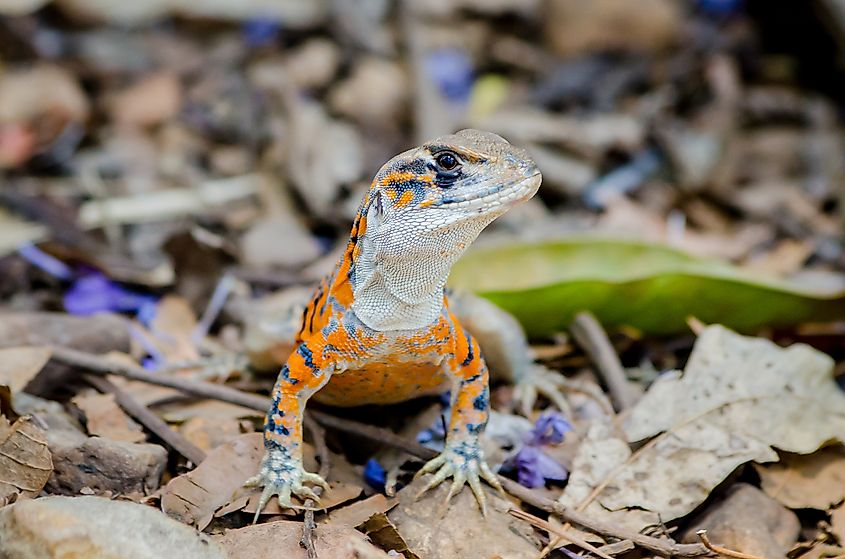
Desert wildlife in the valley included localized subspecies of beetles, ants, bats, blackbirds, bobcats, fleas, coyotes, gnats, diamondbacks, hawks, gophers, horseflies, mountain lions, kangaroo rats, and many more.
Demographics Of Coachella Valley
In the early 20th century, around 1000 people lived in what was the village of Palm Springs and its surroundings. The 1930 U.S. census reported that the majority of the people back then were Mexicans, especially in the eastern ends. The White people were less than half of the population of the Coachella Valley.
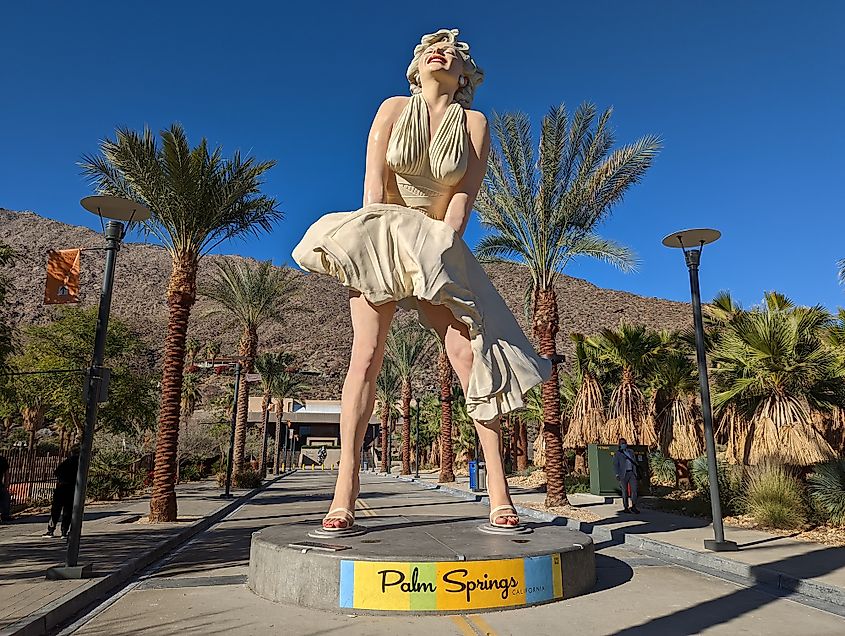
However, the demographics of the region started to change in the 1890s. Large numbers of Irish and Scottish residents arrived in the area, especially after Palm Springs was established as an agricultural colony called "Palm Valley." It was co-founded by John Guthrie McCallum, an American from the U.S. East Coast, and Welwood Murray, a Scottish immigrant. The two founders encouraged people to move to the new colony for its warm climate and ideal winter residence.
Most of the Hispanic community in the valley are Mexican from a multi-generational community. Since the late 1980s, the large number of Mexican immigrants had a great impact on the culture in the Coachella Valley more than the rest of California or the rest of the states in the country, but the national trend of immigrating to the region slowed down due to the late 2000's recession. The majority of the Hispanic immigrants came to obtain work in the area's year-round agriculture. Nowadays, many find employment in other industries and sectors such as construction and home remodeling, landscaping firms, and resort hospitality.











